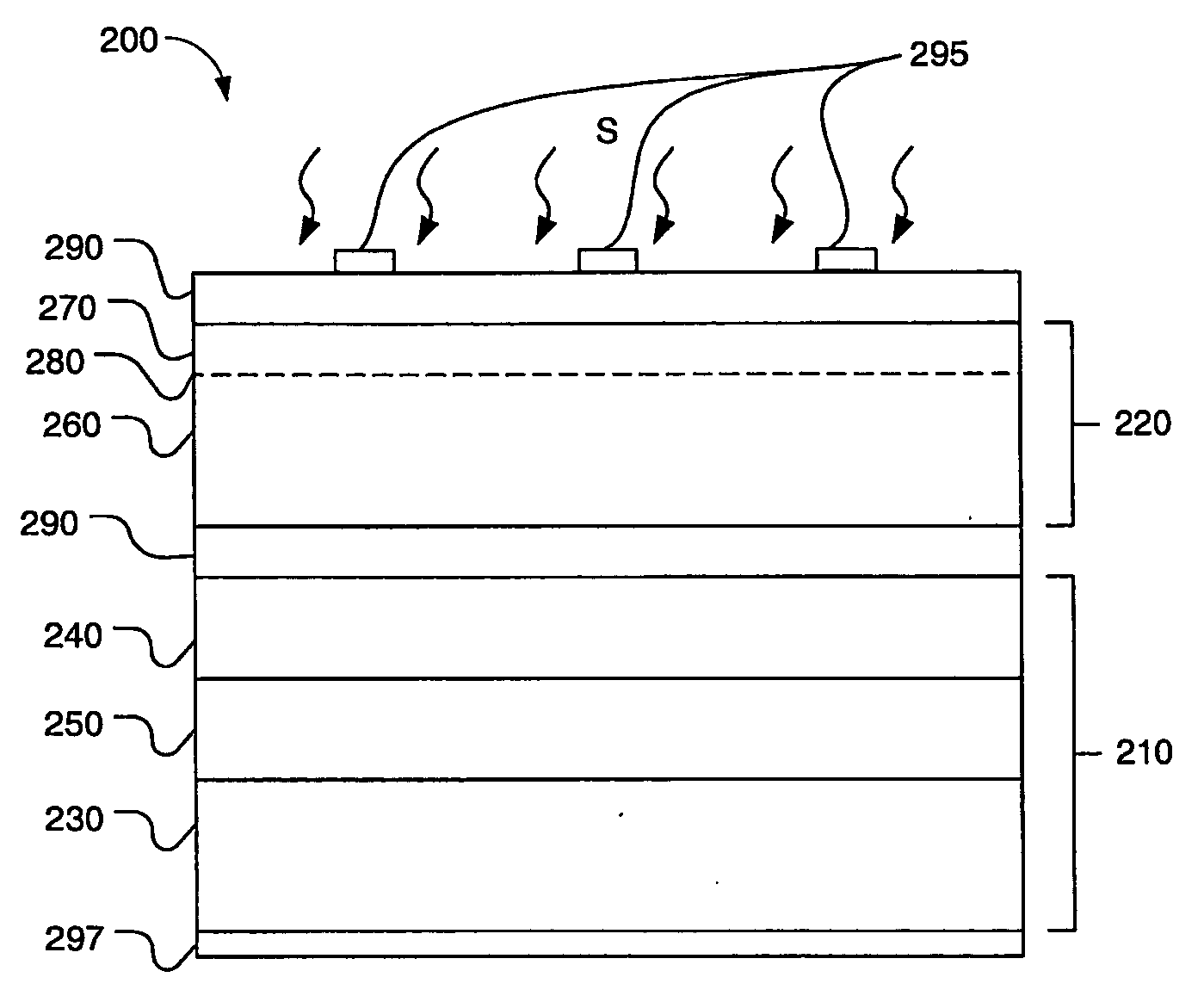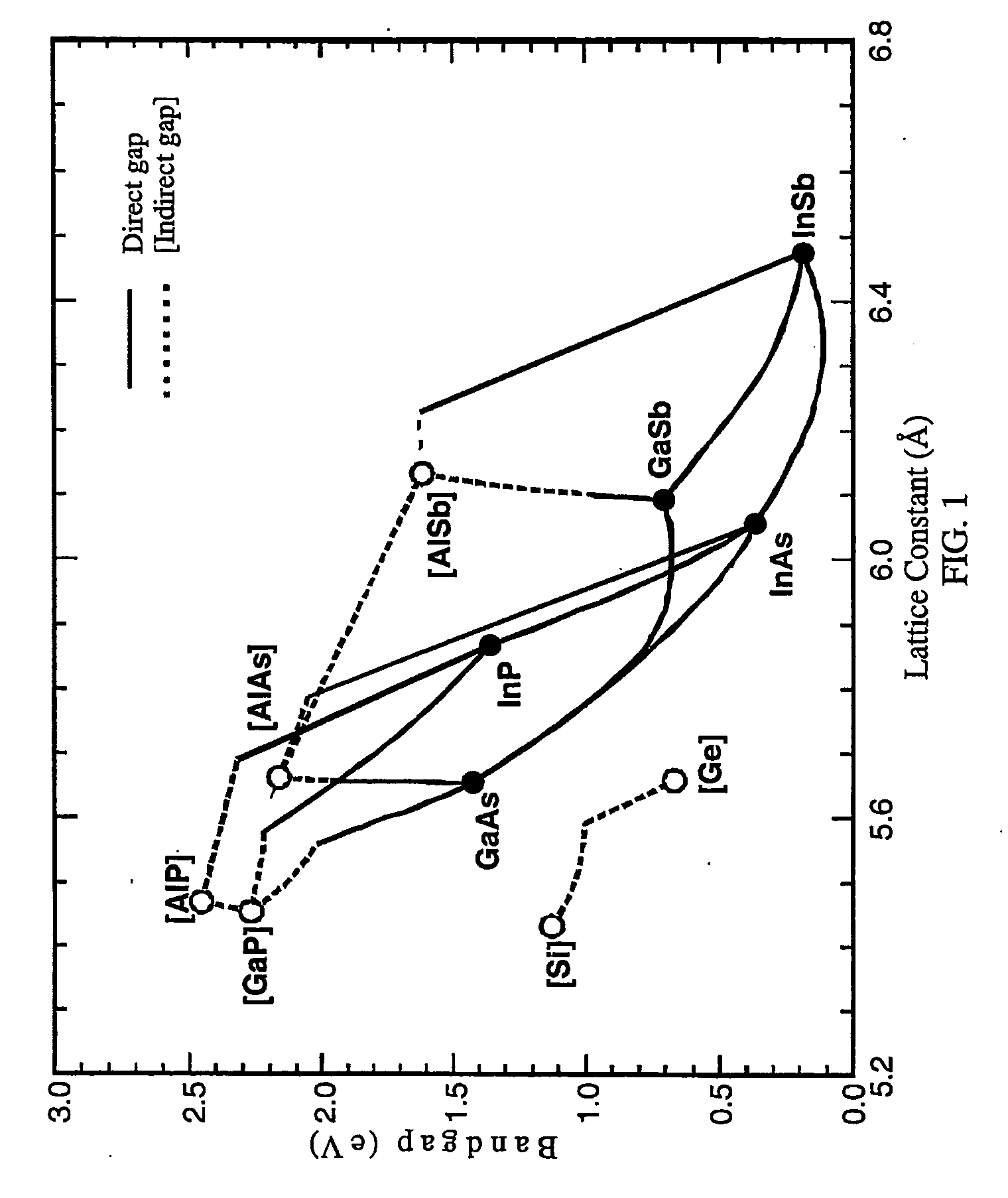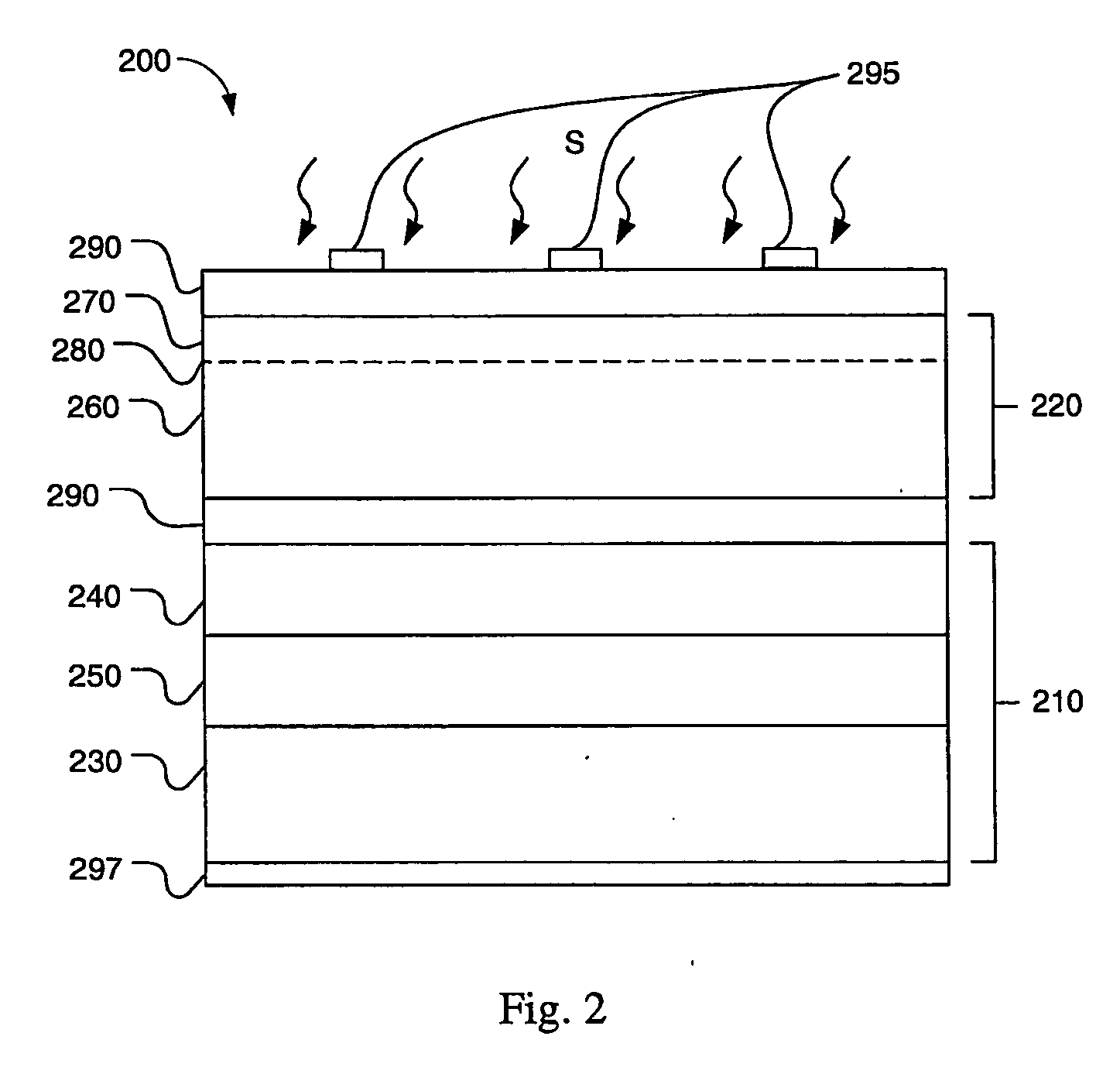Monolithic photovoltaic energy conversion device
a photovoltaic energy conversion and monolithic technology, applied in the direction of semiconductor devices, solid-state devices, electrical devices, etc., can solve the problems of monolithic pv, positional errors, and difficult economic collection, storage and transportation of solar energy
- Summary
- Abstract
- Description
- Claims
- Application Information
AI Technical Summary
Benefits of technology
Problems solved by technology
Method used
Image
Examples
Embodiment Construction
[0027] The present invention provides monolithic PV cells having one or more lattice matched subcells on a lattice-accommodating, silicon based, compliant substrate. The present invention also provides PV devices having a plurality of multi-subcell PV cells, and PV devices where the subcells from a plurality of PV cells are connected to form subcell strings that are voltage matched across the device for maximum power output. The invention includes PV devices having electrically active compliant substrates that act as additional subcells in each PV cell. In addition, the present invention provides light emitting cells having a red subcell, green subcell and blue subcell on a lattice-accommodating, silicon based, compliant substrate. Each light emitting device can include a plurality of light emitting cells, where the subcells are connected to form subcell strings and the subeell strings have substantially equal red-yellow, green, and blue voltages that can be independently tuned to a...
PUM
 Login to View More
Login to View More Abstract
Description
Claims
Application Information
 Login to View More
Login to View More - R&D
- Intellectual Property
- Life Sciences
- Materials
- Tech Scout
- Unparalleled Data Quality
- Higher Quality Content
- 60% Fewer Hallucinations
Browse by: Latest US Patents, China's latest patents, Technical Efficacy Thesaurus, Application Domain, Technology Topic, Popular Technical Reports.
© 2025 PatSnap. All rights reserved.Legal|Privacy policy|Modern Slavery Act Transparency Statement|Sitemap|About US| Contact US: help@patsnap.com



